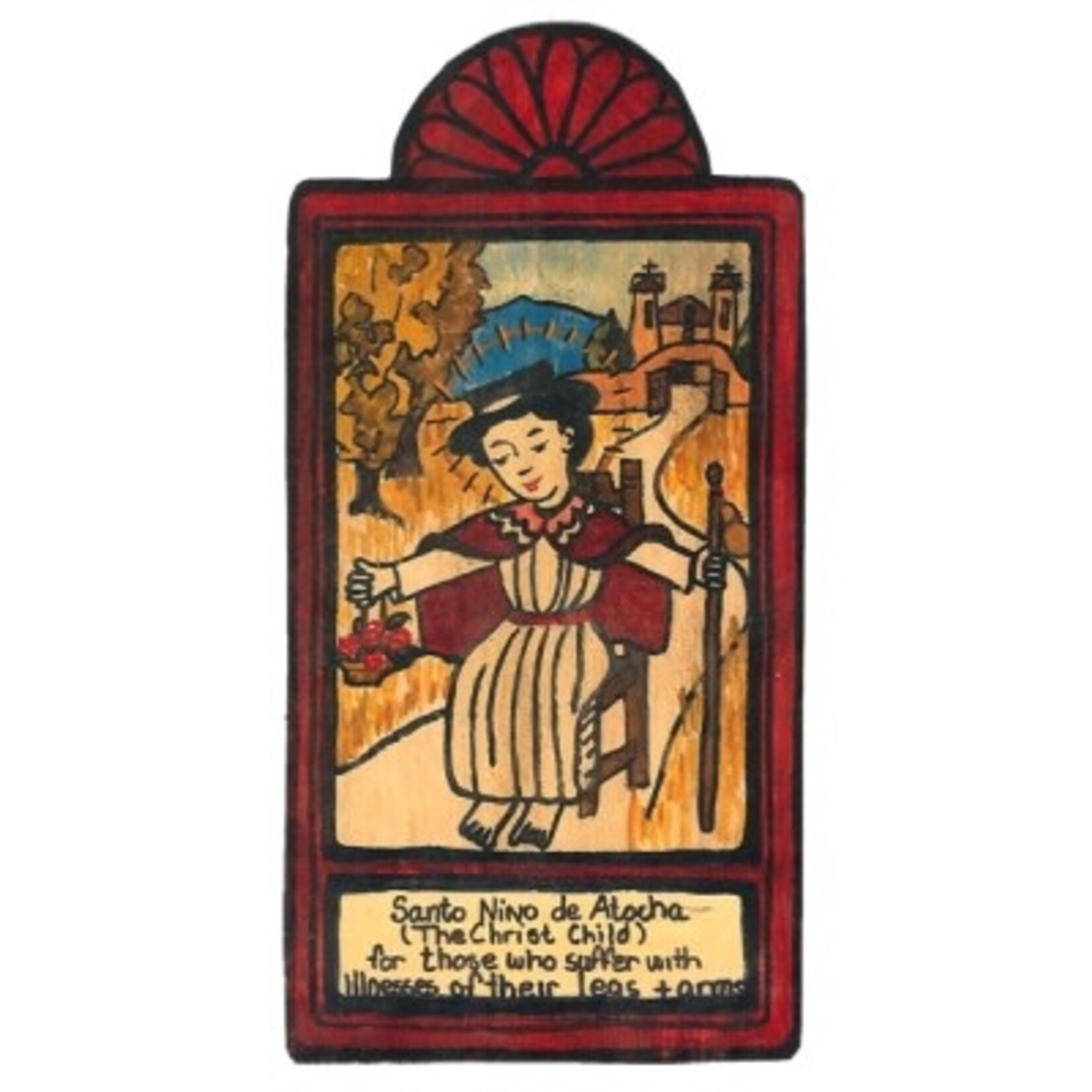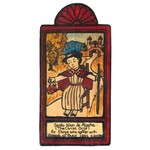Backside reads: Santo Nino de Atocha. Limb ailments. John 6:52 "The bread that I will give is my flesh, for the life of the world."
"Infant of a thousand wonders, cast thy merciful look upon my troubled heart. Be soften by my prayers, which I humbly ask you to hear and grant my requests."
About the Infant Jesus:
It all begins back in 711 AD with the invasion by the northern African Moors of the Iberian Peninsula, which included most of modern Spain. In the 13th century, after the Moors took over the town of Atocha, a central suburb in today’s Madrid, they encarcerated Catholic males and prevented their families from giving them food and water. The only exception to that rule was children under 12 who were allowed to visit and feed family members. This left jailed men without young children – or children altogether – in quite a quandary. Their relatives began to pray for help from Our Lady of Atocha, the local name of the holy Virgin Mary and Christ Child located in the town’s chapel.
One day, the local children who were out feeding their captive relatives returned with reports of an unidentified boy who the Moors were allowing to feed all the men who had not been previously attended to. This boy, reported the children, appeared to be under 12 years old, was dressed in pilgrim attire (with a plumed hat and cloak) and carried a basket of food and gourd full of water. The miraculous thing was no matter how many prisoners the child fed, his gourd and his basket remained full. As sightings of the child continued, the people of Atocha ran to the chapel to give thanks. There, they discovered that the little sandals worn by the Christ Child figure in the arms of Our Lady of Atocha were worn and dusty. They replaced the sandals only to find them worn and dusty again as the child feeding the prisoners continued his rounds day after day.
This story arose in Zacatecas, Mexico about 1800, when the Christ Child was removed from the arms of Nuestra de Senora de Atocha and placed in a chair. In Northern New Mexico, in the village of Chimayo, there is a church in his name with dirt that is said to have curative powers. In the Spring there is a pilgrimage to Chimayo with hundreds of participants. It is said that the Nino wanders the fields and village at night, accomplishing good deeds. People lay shoes outside their doors for the Nino to wear as his old ones get worn out from all the good works.
Dimensions: 3" H X 1.5"W





